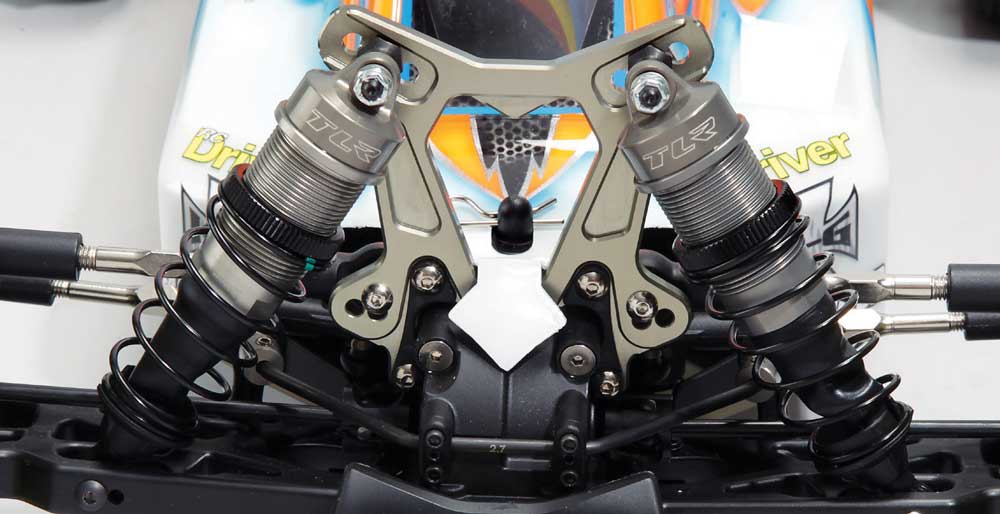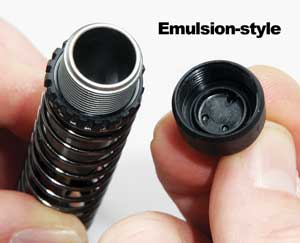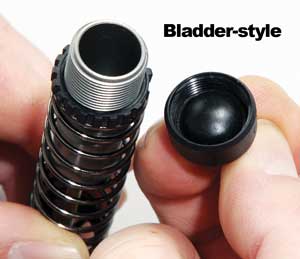Learn the Shocking Truth

Words: Carissa Smyka
Photos: Walter Sidas
In today’s kits and RTR’s, you will find two different styles of shocks; emulsion and bladder shocks. Most kits come with one or the other while some will give you both options.

So what is an emulsion shock? An emulsion shock is a shock that allows the air and oil to mix; it does not utilize an internal rubber bladder. Silicone oil doesn’t compress well without the help of some air to displace the space taken up by the piston when it’s moving within the shock body. Since the air and oil are mixed within the body with the action of the piston, an emulsion shock can feel softer than a bladder style shock built with the same shock oil
Sometimes you may see a racer “working” (compressing) his suspension before a race; they are simply working the air bubbles that have risen to the top of the shock body into the shock oil. One key tip with emulsion style shocks is to make sure all four shocks are built with the same amount of shock oil. If each is built differently, the damping will feel softer or harder from shock to shock. So being consistent counts! One benefit of the emulsion style shock is how easy they are to build. Simply fill each shock body with oil, gently snug the cap and bleed by fully compressing the shock shaft. This will make it nearly impossible to overfill the shock. If you do overfill you’ll know because it will limit the piston movement, otherwise known as hydrolock. Another benefit is that the emulsion shock doesn’t get stiffer during repeated compressions or towards the end of the shock stroke. This makes the performance of the shock feel smoother on the track.

Bladder-style shocks incorporate a rubber internal diaphragm within the shock cap. This bladder keeps the air and shock oil separate. When the piston compresses, the bladder displaces to make up for the space taken up by the piston and shaft in the shock body. A key building tip with the bladder style shock is to make sure there are no air bubbles within the shock oil. Once you know the shock body is free from air bubbles, you can fill up the shock and snug down the cap to bleed the excess oil out. If air is within the shock oil, it will cause inconsistencies in the performance of the shock. The bladder shock is a bit tougher for most people to get right and it may take several attempts to get each shock to feel equal, but the rewards are a much more consistent feel from the suspension.
So which style of shock is better? Well, that depends on the type of track and your driving style. Some say on a smooth track the bladder shock works better, while others say on rough, bumpy tracks the emulsion shock works best. The type of shock to use is really up to the driver and their mechanic! If both types of shocks are available for your make/model, I definitely suggest trying both and make that determination for yourself!
 RC Driver The Best In RC Car & Truck News, Reviews & Video
RC Driver The Best In RC Car & Truck News, Reviews & Video 







